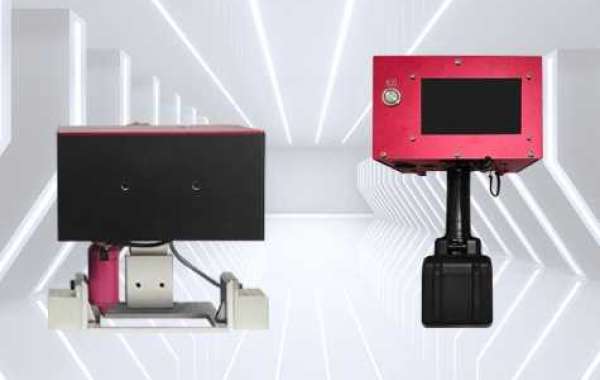Traditional marking methods like laser engraving, chemical etching, or traditional stamping have been used for years, but aerospace manufacturers are increasingly turning to handheld electric dot peen marking systems for permanent part identification. Here’s why:
1. Permanent, High-Contrast Marks Without Material Damage
Aerospace components are often made from high-strength alloys, titanium, or composites that can be sensitive to heat or chemical processes. Laser marking can alter material properties, while chemical etching introduces hazardous waste.
Electric dot peen marking, however, uses a tungsten carbide stylus to create precise micro-indentations without generating heat or compromising structural integrity. The marks remain readable even after coatings, heat treatments, or harsh environmental exposure—critical for aerospace parts that undergo extreme conditions.
2. Portability for On-Site Marking
Large aerospace components (like wing spars or engine mounts) can’t always be moved to a fixed marking station. Handheld electric dot peen markers allow operators to mark parts directly on the production floor, in hangars, or even during maintenance.
Unlike bulky laser systems, these portable devices require no external power source or cooling systems, making them ideal for remote or time-sensitive applications.
3. Compliance with Industry Standards
Aerospace manufacturers must adhere to strict regulations (such as FAA, AS9100, or NADCAP) that require permanent, tamper-proof identifiers. Dot peen marking meets these standards by producing deep, durable marks that resist wear, corrosion, and fading.
Additionally, many handheld models integrate with barcode and Data Matrix software, ensuring marks are both human- and machine-readable for seamless integration into traceability systems.
4. Cost-Effective and Low Maintenance
Compared to laser systems, electric dot peen markers have lower upfront costs and minimal maintenance. There are no consumables (like inks or acids), and the stylus tips last for thousands of marks before replacement. This reduces operational costs while maintaining high marking quality.
5. Flexibility for Complex Geometries
Aerospace parts often have curved or irregular surfaces where traditional marking methods fail. Handheld dot peen markers can adapt to contours, angles, and hard-to-reach areas without sacrificing mark quality. Adjustable force settings ensure consistent depth, even on thin or delicate materials.
The Future of Aerospace Traceability
As supply chain transparency becomes more critical, aerospace manufacturers need reliable, portable, and compliant marking solutions. Handheld electric dot peen technology delivers all these benefits while improving efficiency and reducing costs.
By adopting this method, aerospace companies ensure long-lasting part identification, streamline compliance, and enhance quality control—key factors in an industry where precision and accountability are non-negotiable.














